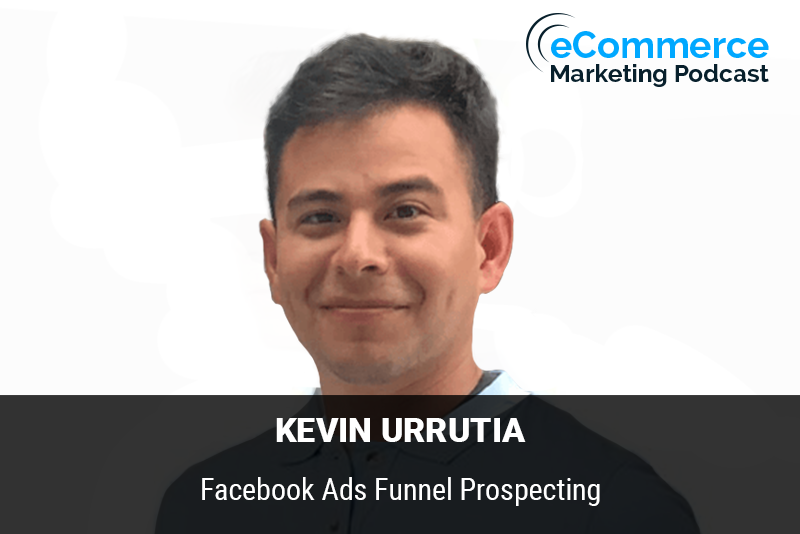
The eCommerce Marketing Podcast walks you through everything that goes into ecommerce marketing — from inbound marketing to paid advertising to conversions. Learn the strategies top marketing experts use to grow their businesses.
Marketing Strategies Revealed in this Episode:
- How an ecommerce brand should proceed with setting up top of the funnel prospecting using Facebook ads
- The various stages of a sales funnel when it comes to digital marketing
- Effective ways to get your Facebook ads to stand out to attract the right customers
- Ecommerce brands that we can checkout today that are doing an awesome job with top of funnel prospecting on Facebook

Episode Title: Building Your Top Line Sales Funnel for Prospecting on Facebook Ads with Kevin Urrutia
Host: Arlen Robinson
Guest: Kevin Urrutia, Co-Founder & CEO of Voy Media
In this episode of the E-commerce Marketing Podcast, Arlen Robinson speaks with Kevin Urrutia, a travel and nature enthusiast and Co-Founder & CEO of Voy Media. Kevin shares his journey from starting a cleaning company to running a successful digital marketing agency. They dive into the strategies for building a top-line sales funnel for prospecting on Facebook ads, covering the importance of different stages in the sales funnel, targeting the right audience, and standing out from competitors.
Key Takeaways:
- Kevin’s Background and Journey [00:00 – 07:00]
- Started a cleaning company and learned various marketing strategies including SEO, affiliate marketing, and email marketing [01:30].
- Expanded into e-commerce with an outdoor gear company and a travel luggage company [03:00].
- Founded Voy Media to help other businesses with paid social media advertising [05:30].
- Stages of the Sales Funnel [07:00 – 11:30]
- Top of the Funnel (ToF): Customers who don’t know about your brand. Aim to collect leads or make initial sales [07:30].
- Middle of the Funnel (MoF): People who have interacted with your brand but haven’t converted [08:00].
- Bottom of the Funnel (BoF): Customers who are close to purchasing or need a final push [09:00].
- Loyalty Campaigns: Engaging existing customers to reassure them and encourage repeat purchases [10:00].
- Setting Up a Top of the Funnel Prospecting System [11:30 – 18:00]
- Drive traffic to a detailed sales page or offer a lead magnet to collect emails [12:00].
- Use content-rich pages to educate potential customers and build trust [13:00].
- The importance of a well-crafted email follow-up strategy [14:30].
- Targeting the Right Audience on Facebook [18:00 – 24:00]
- Use Facebook Audience Insights and Google Keyword Planner to find relevant interests and keywords [18:30].
- Testing product-market fit through Facebook ads [20:00].
- Importance of emotional hooks in ads to capture attention and drive conversions [22:00].
- Standing Out from Competitors [24:00 – 29:00]
- Create compelling ad creatives with a strong storyline and emotional appeal [24:30].
- Highlight the unique selling points and benefits of your product [26:00].
- Example: Ads targeting larger women struggling to find well-fitting clothes [27:00].
- Successful Brands to Learn From [29:00 – 33:00]
- Brands offering free giveaways or custom landing pages to attract leads [29:30].
- Example: A brand giving away free masks and upselling full-priced items on the thank you page [30:00].
- The Importance of Staying Updated with Trends [33:00 – 35:00]
- Keeping up with current events and trends to make your marketing relevant [33:30].
- Platforms like TikTok can provide insights into consumer behavior and preferences [34:00].
Guest Info:
- Name: Kevin Urrutia
- Position: Co-Founder & CEO of Voy Media
- Website: Voy Media
- Email: Kevin Urrutia











